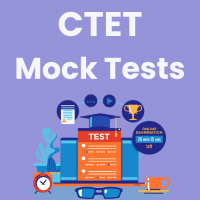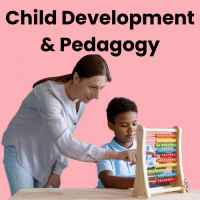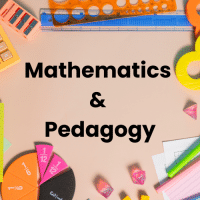Teaching Exam > Teaching Questions > After Sheetu ...... the magazines and novels,...
Start Learning for Free
After Sheetu ...... the magazines and novels, she decided to go out and meet some friends.
- a)read
- b)had been reading
- c)had read
- d)will have read
- e)reading
Correct answer is option 'C'. Can you explain this answer?
Most Upvoted Answer
After Sheetu ...... the magazines and novels, she decided to go out an...
To determine the correct answer, let's analyze the sentence:
"After Sheetu ...... the magazines and novels, she decided to go out and meet some friends."
The sentence indicates that Sheetu completed the action of reading magazines and novels before deciding to go out and meet her friends. Therefore, we need to use the past perfect tense to indicate the completion of the action before another past action.
Let's evaluate each option:
A: "read" - This is the simple past tense, indicating a past action. However, it does not convey that the action was completed before the decision to go out and meet friends. Incorrect.
B: "had been reading" - This is the past perfect continuous tense, indicating an ongoing action that started before another past action. However, it does not convey that the action was completed before the decision to go out and meet friends. Incorrect.
C: "had read" - This is the correct answer. The past perfect tense "had read" indicates that the action of reading magazines and novels was completed before the decision to go out and meet friends. Correct.
D: "will have read" - This is the future perfect tense, indicating an action that will be completed before a future time. It does not fit the context of the sentence. Incorrect.
E: "reading" - This is the present participle form, indicating an ongoing action in the present. It does not fit the context of the sentence. Incorrect.
Therefore, the correct answer is C: "had read."
Free Test
FREE
| Start Free Test |
Community Answer
After Sheetu ...... the magazines and novels, she decided to go out an...
Understanding the Correct Answer
The correct answer to the sentence is option 'c' - "had read." This choice conveys a specific tense and aspect that aligns well with the context. Let’s break this down further.
Past Perfect Tense
- The phrase "had read" is in the past perfect tense.
- This tense is used to express an action that was completed before another action in the past.
Contextual Flow
- The sentence implies that Sheetu completed the action of reading magazines and novels before she decided to go out.
- By using "had read," we indicate that her reading was finished prior to her decision to meet friends.
Comparison with Other Options
- Option a: read - This is simple past, which doesn’t indicate the sequence of events.
- Option b: had been reading - This implies she was in the process of reading, which doesn’t fit the context of her having completed it.
- Option d: will have read - This is future perfect, suggesting an action that will be completed in the future, which is irrelevant here.
- Option e: reading - This is a gerund form and does not fit grammatically in the context of the sentence.
Conclusion
- Thus, "had read" effectively sets the stage for the subsequent action, creating a clear timeline and maintaining coherence in the narrative.
- This is why option 'c' is the most appropriate choice for the sentence.
The correct answer to the sentence is option 'c' - "had read." This choice conveys a specific tense and aspect that aligns well with the context. Let’s break this down further.
Past Perfect Tense
- The phrase "had read" is in the past perfect tense.
- This tense is used to express an action that was completed before another action in the past.
Contextual Flow
- The sentence implies that Sheetu completed the action of reading magazines and novels before she decided to go out.
- By using "had read," we indicate that her reading was finished prior to her decision to meet friends.
Comparison with Other Options
- Option a: read - This is simple past, which doesn’t indicate the sequence of events.
- Option b: had been reading - This implies she was in the process of reading, which doesn’t fit the context of her having completed it.
- Option d: will have read - This is future perfect, suggesting an action that will be completed in the future, which is irrelevant here.
- Option e: reading - This is a gerund form and does not fit grammatically in the context of the sentence.
Conclusion
- Thus, "had read" effectively sets the stage for the subsequent action, creating a clear timeline and maintaining coherence in the narrative.
- This is why option 'c' is the most appropriate choice for the sentence.

|
Explore Courses for Teaching exam
|

|
Question Description
After Sheetu ...... the magazines and novels, she decided to go out and meet some friends. a)read b)had been reading c)had read d)will have read e)readingCorrect answer is option 'C'. Can you explain this answer? for Teaching 2025 is part of Teaching preparation. The Question and answers have been prepared according to the Teaching exam syllabus. Information about After Sheetu ...... the magazines and novels, she decided to go out and meet some friends. a)read b)had been reading c)had read d)will have read e)readingCorrect answer is option 'C'. Can you explain this answer? covers all topics & solutions for Teaching 2025 Exam. Find important definitions, questions, meanings, examples, exercises and tests below for After Sheetu ...... the magazines and novels, she decided to go out and meet some friends. a)read b)had been reading c)had read d)will have read e)readingCorrect answer is option 'C'. Can you explain this answer?.
After Sheetu ...... the magazines and novels, she decided to go out and meet some friends. a)read b)had been reading c)had read d)will have read e)readingCorrect answer is option 'C'. Can you explain this answer? for Teaching 2025 is part of Teaching preparation. The Question and answers have been prepared according to the Teaching exam syllabus. Information about After Sheetu ...... the magazines and novels, she decided to go out and meet some friends. a)read b)had been reading c)had read d)will have read e)readingCorrect answer is option 'C'. Can you explain this answer? covers all topics & solutions for Teaching 2025 Exam. Find important definitions, questions, meanings, examples, exercises and tests below for After Sheetu ...... the magazines and novels, she decided to go out and meet some friends. a)read b)had been reading c)had read d)will have read e)readingCorrect answer is option 'C'. Can you explain this answer?.
Solutions for After Sheetu ...... the magazines and novels, she decided to go out and meet some friends. a)read b)had been reading c)had read d)will have read e)readingCorrect answer is option 'C'. Can you explain this answer? in English & in Hindi are available as part of our courses for Teaching.
Download more important topics, notes, lectures and mock test series for Teaching Exam by signing up for free.
Here you can find the meaning of After Sheetu ...... the magazines and novels, she decided to go out and meet some friends. a)read b)had been reading c)had read d)will have read e)readingCorrect answer is option 'C'. Can you explain this answer? defined & explained in the simplest way possible. Besides giving the explanation of
After Sheetu ...... the magazines and novels, she decided to go out and meet some friends. a)read b)had been reading c)had read d)will have read e)readingCorrect answer is option 'C'. Can you explain this answer?, a detailed solution for After Sheetu ...... the magazines and novels, she decided to go out and meet some friends. a)read b)had been reading c)had read d)will have read e)readingCorrect answer is option 'C'. Can you explain this answer? has been provided alongside types of After Sheetu ...... the magazines and novels, she decided to go out and meet some friends. a)read b)had been reading c)had read d)will have read e)readingCorrect answer is option 'C'. Can you explain this answer? theory, EduRev gives you an
ample number of questions to practice After Sheetu ...... the magazines and novels, she decided to go out and meet some friends. a)read b)had been reading c)had read d)will have read e)readingCorrect answer is option 'C'. Can you explain this answer? tests, examples and also practice Teaching tests.

|
Explore Courses for Teaching exam
|

|
Signup for Free!
Signup to see your scores go up within 7 days! Learn & Practice with 1000+ FREE Notes, Videos & Tests.


















